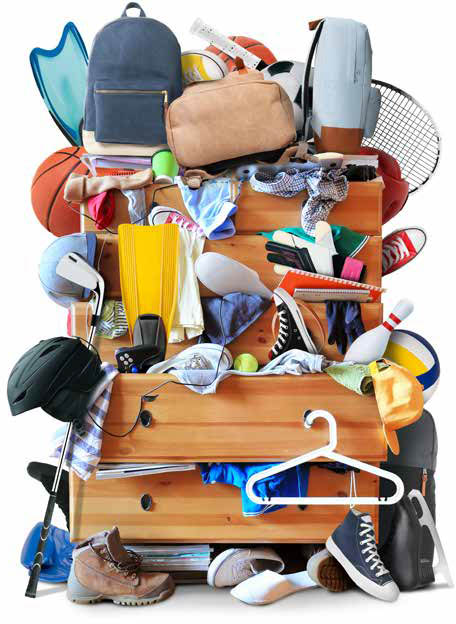 A hoarded unit can contain a mix of rubbish, including rotten food items, wet garbage, soiled clothing, electronics, furniture, paper and items that may have been retrieved from the trash. This mix of rubbish can almost be ceiling high in extreme cases. The environment becomes an optimal breeding ground for bacteria, mold and pests that enjoy a safe home and constant supply of moisture and food. Items brought in from the trash by the hoarder can contain bedbugs and other pests that can rapidly infest the unit.
A hoarded unit can contain a mix of rubbish, including rotten food items, wet garbage, soiled clothing, electronics, furniture, paper and items that may have been retrieved from the trash. This mix of rubbish can almost be ceiling high in extreme cases. The environment becomes an optimal breeding ground for bacteria, mold and pests that enjoy a safe home and constant supply of moisture and food. Items brought in from the trash by the hoarder can contain bedbugs and other pests that can rapidly infest the unit.
A previously hoarded condo unit can look like a bit of a disaster zone after the trash and unwanted items are cleared out. The carpets are generally soiled beyond repair and a majority of surfaces stained or ruined. Holes can be found in walls and ceilings. Windows that have been left shut for years can be stuck shut. Appliances are often broken and smell of rotten food. Cupboard doors are often broken and vanities can be ruined. There can be plumbing issues, including dripping taps, toilets that have been left to run on and plugged drains. The air quality in the unit is often poor because of mold and bacteria growth.
In most cases, a previously hoarded unit will require an extreme clean before tradespeople will agree to go in to repair problems. The unit will likely have to be stripped of all carpeting, which is a good first step of the clean-up process. (Sometimes carpet can be cleaned — area rugs can be sent to a professional cleaning service and can often be saved.) All clothes should be bagged and cleaned — it is best to take clothing to a laundromat that offers wash and fold service. Appliances will most likely have to be partially dismantled to be cleaned properly or discarded. All surfaces, including hard furniture and windows, will typically require a thorough clean. A thorough clean of the entire unit should remove surface mold and kill the bacteria. Killing the bacteria and mold will create a fresh-smelling environment. At this point, the unit should be ready for repairs, renovation or re-decorating, depending on the extent damage.
It is an excellent idea to prioritize plumbing repairs. Sinks will commonly be plugged, which can cause flooding. Taps left to drip and toilets that run on will increase water usage costs. Exterminators may have to be called in to deal with pest issues. Unfortunately, pests from the hoarded unit may have infiltrated common areas or surrounding units. The units surrounding the hoarded unit may have to be treated for pests. If mice were an issue, there could be issues with chewed wiring, which should be investigated.
The air quality in the unit may continue to be a concern even after the unit is cleaned. Lingering odours could be caused by mold growing behind walls and under fixed cabinetry that could not be cleaned. It would be wise to have an air quality test performed at this point. If hidden mold is an issue, a mold remediation service may need to be brought in. Unfortunately, mold spores can spread in the air and impact other areas of the condominium building. The HVAC system should be investigated to ensure filters are changed and the system is clean. Antibacterial spray can be applied inside ducts of forced air systems.
The goal of remediating a hoarded unit is to return it to a state that is safe for the resident and the condominium building. A previously hoarded unit can also be renovated to look like new at a further cost. The owner of the unit will have to decide whether he or she wants to invest in renovating the unit after it has been restored to a safe living environment.
